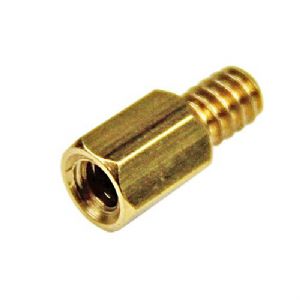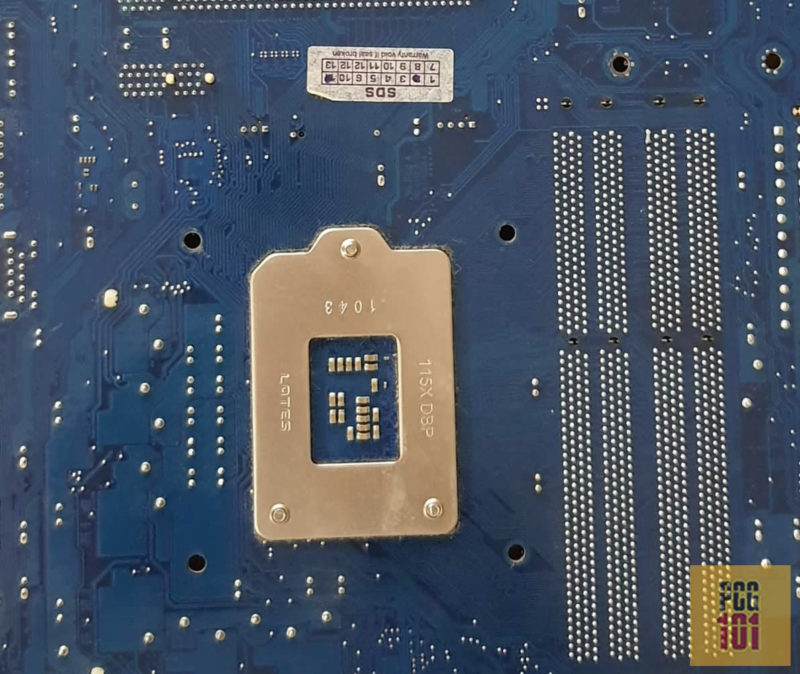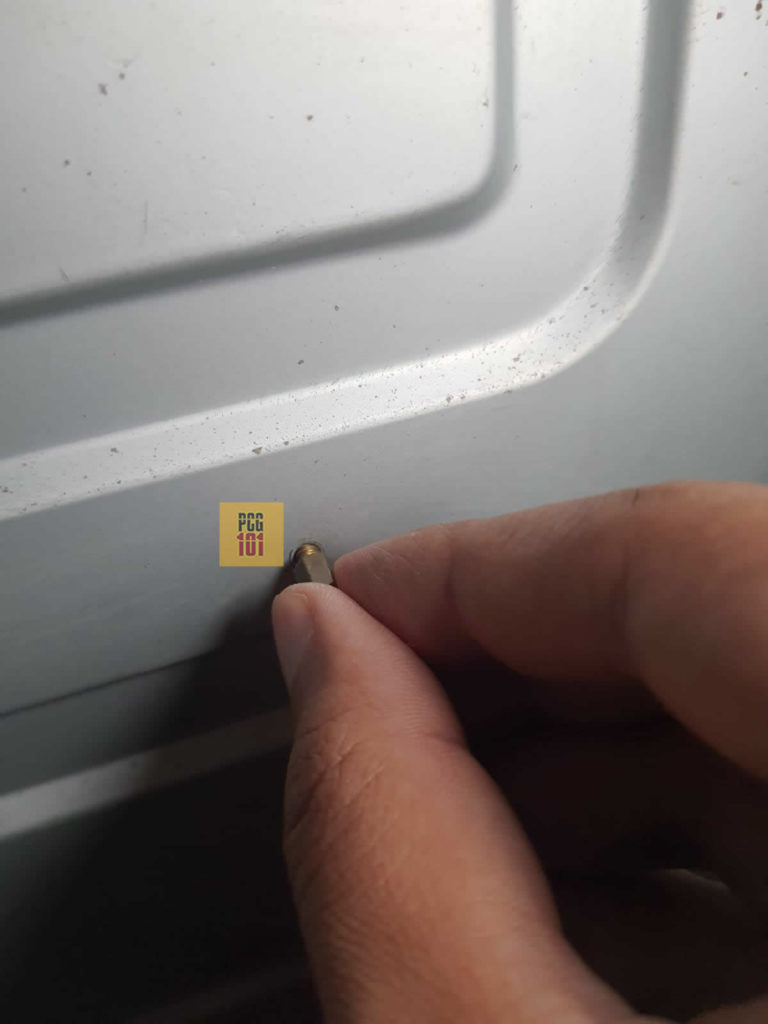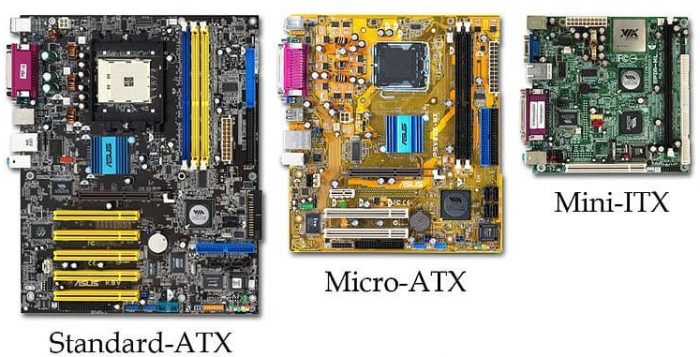A motherboard standoff is a small cylindrical-shaped metallic object that screws into dedicated mounting holes on the PC case. Motherboard standoffs aim to lift the motherboard off from the CPU case.
Hence, in the simplest of definitions, a standoff is technically a spacer between the motherboard and the case.
Motherboard has a lot of complex electrical circuits with hundreds of solder points and electrical terminals on its backside.
Therefore, the motherboard must be lifted so it does not come in contact with the metallic PC case, as it could create a short circuit.
Motherboard standoffs may look small, trivial, and without much consequence, but they are an integral part of PC building.
In the following text, we look further into what motherboard standoffs are, why you should install them, and how you install them.
TABLE OF CONTENTS
What Are Motherboard Standoffs?

Motherboard standoffs have a very peculiar design. On one end, they have threads, just like a regular screw. This site is used for mounting the standoff onto the PC case.
The other end of the standoff has a hole that is threaded on the inside. This is the end on which the motherboard can be screwed into.
Also Read:
Why are Standoffs Necessary?

For starters, you have to be aware that there are electrical connections at the bottom of the motherboard as at the top.
These connections, mostly soldered points, will have current passing through them during operation.
While the manufacturers have usually done their part to isolate the different circuits, as users, we have to play our part to avoid shorting the motherboard.
This is where motherboard standoffs come in. As the name implies, motherboard standoffs keep the bottom side of the motherboard OFF from any surface, especially the case.
Since motherboard cases are primarily metallic, a standoff is used to raise the board from the metal case so that none of the conductive parts at the bottom of the board can get shorted out – which would happen if multiple conductive circuits end up touching the board.
In addition to preventing potential short circuits, standoffs also offer two other functions. Firstly, they firmly hold the motherboard in place, and secondly, the gap created contributes to cooling the board during operations as air can flow much more quickly.
Also Read: Why is a Motherboard Important?
Standoffs Come with the Case
Standoffs come packaged with the case.
Some PC Cases come with the standoffs pre-installed, while others have to install the standoffs manually, depending on the size of your motherboard.
How to Install Motherboard Standoffs on a Case
Motherboard standoffs are often hex shaped and may require a hex driver to install if you want to tighten the standoffs to the case firmly.
Unfortunately, neither the case nor the motherboard comes with a hex driver.

Also Read: How to Connect Extra Fans to Motherboard?
Motherboard Form Factor and Standoff Alignment
Essentially you have to align the standoffs on the case to the mounting holes on your motherboard.
There are three common types of motherboard form factors or sizes:
- ATX: 12 x 9.6 inches
- Micro ATX: 9.6 x 9.6 inches
- Mini ITX: 6.7 x 6.7 inches

Depending upon your form factor, the mounting holes’ locations would differ.
More prominent PC cases like mid-tower or full tower are now designed to support all three form factors. Real tower cases can help the workstation-grade E-ATX (extended ATX) motherboards.
Hence, before installing the standoffs, you must ensure you have matched and identified the holes required to mount your board form factor.
So, for instance, if you have a Micro ATX motherboard, but your PC case supports Mini ITX, Micro ATX, and ATX form factor, you will need to make sure that the standoffs are placed ONLY on the PC case holes which correspond with the Micro ATX dimension.
Also, ensure that you tighten it just enough. Over-tightening the standoffs can break them or damage the case.
Mounting the Motherboard on the Standoffs
The board can now be mounted on top with the standoffs correctly and firmly mounted on the case.
To do this, align the board with the standoffs, place the screws, and tighten. Again make sure you do not over-tighten the screws on the motherboard.
Also Read: What are Motherboard Power Phases and VRMs?
Keep the Space Underneath the Motherboard Clear
With the motherboard mounted and elevated on standoffs, it leaves up some space below it where you may be tempted to route your cables.
However, the space left underneath should be left empty to avoid damage to the motherboard and promote good airflow.
Also Read:
Also Read:
Final Words
When building a computer, one of the few things that most beginners can overlook is the importance of motherboard standoffs. Here I talked comprehensively about motherboard standoffs and why and how they should be installed.
Installing a standoff is not optional but a critical part of building a PC. They are essential in ensuring that the motherboard doesn't contact the case and ends up shorting out.
Motherboard standoffs will often come with the case you buy for your board. With a compatible case, you will find matching mounting holes for your board's form factor.
The installation itself is pretty straightforward, you can use the manual that comes with your PC case, or you could use simply logically of aligning the standoffs with the mounting hold on your motherboard.
It is worth mentioning that you should always take care when handling electrical equipment during PC builds.
FREQUENTLY ASKED QUESTIONS
1. Are there different types of motherboard standoffs for different motherboard sizes?
Yes, there are different types of motherboard standoffs for different motherboard sizes.
Motherboard standoffs are designed to fit specific screw holes on the motherboard, and different motherboard form factors (such as ATX, micro-ATX, and mini-ITX) may have different screw hole patterns.
When purchasing motherboard standoffs, be sure to choose a set that is compatible with your specific motherboard form factor.
2. Can motherboard standoffs be reused when upgrading a motherboard?
In many cases, motherboard standoffs can be reused when upgrading a motherboard.
However, it is important to ensure that the standoffs are still in good condition and are compatible with the new motherboard form factor.
If the new motherboard requires a different screw hole pattern or standoff height, new standoffs may be required.
3. Can additional motherboard standoffs be purchased separately if needed?
Yes, additional motherboard standoffs can be purchased separately if needed.
Motherboard standoffs are relatively inexpensive and widely available, and can be purchased from most electronics retailers or online.
When purchasing additional standoffs, be sure to choose a set that is compatible with your specific motherboard form factor.
4. Is it possible to install a motherboard without using standoffs?
While it may be technically possible to install a motherboard without using standoffs, it is not recommended.
Motherboard standoffs help to prevent the motherboard from touching the metal case, which can cause short circuits and other electrical problems.
Additionally, using standoffs helps to ensure that the motherboard is properly aligned with the screw holes in the case, which can help prevent damage to the motherboard and other components during installation.
Therefore, it is strongly recommended to use motherboard standoffs whenever installing a motherboard in a computer case.
